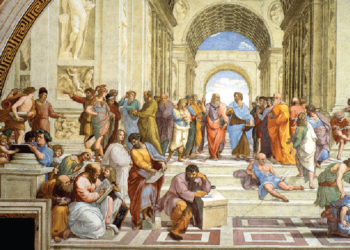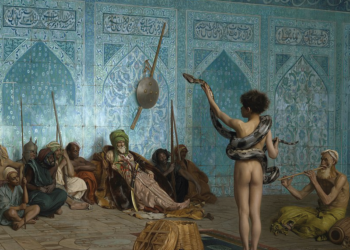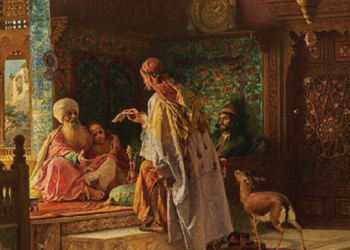Mathematics in Ancient India
1) Universities in Ancient India:
Education has always been valued in Indian society, and there is evidence of organized learning institutions dating back to ancient times. One of the most significant contributions of ancient India was the establishment of universities, or “Mahaviharas,” which were centers of learning for students from all over the world.
The earliest universities in India were established in Taxila, Nalanda, and Vikramashila. Taxila was founded in the 5th century BCE, and it is said to have been one of the oldest universities in the world. Nalanda was established in the 5th century CE and was considered to be the most prominent university of its time. Vikramashila was founded in the late 8th century CE and was known for its emphasis on the study of Buddhist philosophy.
These universities were renowned for their rigorous academic standards and offered courses in a wide range of subjects, including mathematics, astronomy, medicine, literature, and philosophy. The curriculum was designed to challenge students and stimulate intellectual inquiry, and the teachers were known for their erudition and pedagogical skills.
The universities attracted students from all over the world, including China, Korea, and Central Asia, and were instrumental in the spread of Buddhism, which was one of the dominant religions in ancient India. The universities were supported by wealthy patrons, including kings and merchants, who recognized the importance of education and scholarship in promoting social and cultural development.
2) Astrology in Ancient India:
Astrology is an ancient discipline that seeks to interpret the influence of celestial bodies on human affairs. It has a long and rich history in India, where it has been an integral part of the culture for thousands of years. In ancient India, astrology was seen as a science that could help people understand their place in the cosmos and make better decisions about their lives.
The origins of Indian astrology can be traced back to the V edas, which are the oldest scriptures of Hinduism. The V edas contain references to astrology, and many of the hymns are dedicated to the worship of celestial bodies such as the sun, moon, and stars. Over time, astrology became more elaborate, and new systems of interpretation and prediction were developed.
One of the most famous works on Indian astrology is the Brihat Parashara Hora Shastra, which was written in the 7th century CE by the sage Parashara. This text is still considered to be one of the most authoritative sources on V edic astrology and is used by practitioners today.
In ancient India, astrology was used for a variety of purposes, including predicting the outcome of battles, determining auspicious times for important events, and understanding the fate and destiny of individuals. It was believed that the position of the planets and stars at the time of a person’s birth could reveal important information about their personality, their strengths and weaknesses, and their future prospects.
Astrology was also closely linked to the practice of medicine, and physicians would often consult astrological charts to determine the best course of treatment for their patients. This was based on the idea that each planet had a specific influence on different parts of the body and that understanding these influences could help diagnose and treat illnesses.
3) The role of religion in Mathematics:
Religion has had a significant influence on many aspects of Indian culture, including
mathematics. In ancient India, mathematics was seen as a spiritual pursuit, and it was often studied in the context of religious texts and practices. This led to the development of a unique mathematical tradition that incorporated religious and philosophical concepts.
One of the most famous examples of the relationship between religion and mathematics in India is the concept of zero. The concept of zero was developed in India in the 5th century CE and was first used in the context of Hindu religious texts. The concept of zero was crucial to the development of modern mathematics, and it is still used in virtually every branch of mathematics today.
Another example of the relationship between religion and mathematics in India is the use of geometric shapes and patterns in Hindu temple architecture. Many Hindu temples are designed using intricate geometric patterns that are believed to have spiritual significance. These patterns are often based on mathematical principles, and they reflect a deep understanding of the relationship between mathematics and religion.
In addition to these examples, religion also played a role in the development of Indian
numerology. Numerology is the practice of assigning spiritual or mystical significance to
numbers, and it has been an important part of Indian culture for centuries. The use of
numerology in religion led to the development of new mathematical techniques and systems, such as the Vedic square and the Chaldean system of numerology.
However, it is important to note that religion did not always have a positive influence on
mathematics in India. In some cases, religious beliefs and practices led to the suppression of scientific inquiry and the rejection of mathematical ideas that were seen as incompatible with religious doctrine.
4) Famous Mathematicians in Ancient India:
Ancient India was home to some of the greatest mathematicians in history. These mathematicians made significant contributions to fields such as algebra, geometry, trigonometry, and calculus, and their work has had a lasting impact on the development of mathematics worldwide.
Here are some of the most famous mathematicians in ancient India.
Aryabhata was an Indian mathematician and astronomer who lived in the 5th century CE. He is best known for his work on trigonometry, which included the development of the sine and cosine functions. Aryabhata also made significant contributions to algebra and astronomy and is considered one of the greatest mathematicians in Indian history.
Brahmagupta was an Indian mathematician and astronomer who lived in the 7th century CE. He is known for his work on algebra and number theory, including the development of the concept of zero. Brahmagupta’s work had a profound impact on the development of modern mathematics and his ideas were later transmitted to the Arab world and Europe.
Bhaskara II was an Indian mathematician and astronomer who lived in the 12th century CE. He is best known for his work on calculus, including the development of the derivative and the differential equation. Bhaskara II also made significant contributions to algebra and geometry, and his work was highly influential in the development of modern calculus.
Madhava of Sangamagrama was an Indian mathematician and astronomer who lived in the 14th century CE. He is known for his work on calculus and the development of infinite series, including the discovery of the Taylor series. Madhava’s work had a profound impact on the development of modern calculus and he is considered one of the greatest mathematicians in Indian history.
Srinivasa Ramanujan was an Indian mathematician who lived in the early 20th century CE. He is known for his work on number theory and the discovery of several new mathematical concepts, including the partition function and the Ramanujan prime. Ramanujan’s work had a profound impact on the development of modern mathematics and his ideas continue to influence mathematical research today.
5) Ancient Indian Mathematics and Pythagoras:
Pythagoras is often credited with the discovery of the Pythagorean theorem, which states that the square of the length of the hypotenuse of a right triangle is equal to the sum of the squares of the lengths of the other two sides. However, it is now widely believed that the Pythagorean theorem was known in India long before Pythagoras.
The earliest known reference to the Pythagorean theorem in Indian mathematics is found in the Sulba Sutras, which are a collection of ancient Indian texts that deal with geometry and mathematics. The Sulba Sutras were written between the 8th century BCE and the 4th century BCE, which is centuries before Pythagoras was born. The Sulba Sutras contain several geometric constructions and proofs, including a proof of the Pythagorean theorem. In addition to the Sulba Sutras, the Pythagorean theorem is also found in several other ancient Indian texts, such as the Baudhayana Sulba Sutra and the Manava Sulba Sutra.
These texts provide further evidence that the Pythagorean theorem was known in India long before Pythagoras. It is not clear how the Pythagorean theorem was transmitted from India to the rest of the world.
Some historians speculate that it was brought to Greece by Pythagoras himself, who may have traveled to India and studied Indian mathematics. Others suggest that the theorem was brought to Greece by Indian merchants and scholars who traveled to the Mediterranean world.
Regardless of how the Pythagorean theorem was transmitted to the rest of the world, it is clear that ancient Indian mathematics had a profound influence on the development of mathematics worldwide. The Pythagorean theorem is just one example of the many mathematical ideas and concepts that were developed in ancient India, and its legacy continues to inspire mathematicians and scientists around the world.
6) Muslim mathematics and Ancient India:
Muslim mathematicians made significant contributions to the field of mathematics during the medieval period, particularly in the areas of algebra, trigonometry, and astronomy. However, it is important to note that many of these contributions were built on the foundation laid by ancient Indian mathematicians.
During the medieval period, Muslim scholars made significant advances in algebra. They developed new techniques for solving equations and introduced many of the symbols and notations still used in algebra today. However, many of these techniques and symbols were based on earlier Indian works such as the Brahmasphutasiddhanta by Brahmagupta.
Trigonometry was another area where Muslim mathematicians made significant contributions. They built on the work of earlier Indian mathematicians such as Aryabhata and developed new trigonometric identities and methods for solving trigonometric equations. The famous astronomer and mathematician Al-Biruni, for example, wrote extensively on trigonometry and made significant contributions to the field.
In addition to algebra and trigonometry, Muslim scholars also made significant contributions to astronomy. They built on the work of earlier Indian astronomers such as Aryabhata and Brahmagupta and developed new methods for predicting planetary positions and eclipses. The famous astronomer Al-Khwarizmi, for example, developed a new method for computing the positions of the planets that was based on the work of earlier Indian astronomers.
Despite the significant contributions of Muslim mathematicians, it is important to note that many of these contributions were based on earlier Indian works. Muslim scholars were able to build on the foundation laid by ancient Indian mathematicians and make significant advances in their own right. The exchange of knowledge and ideas between India and the Muslim world was a two-way process, with both sides contributing to the development of mathematics.












